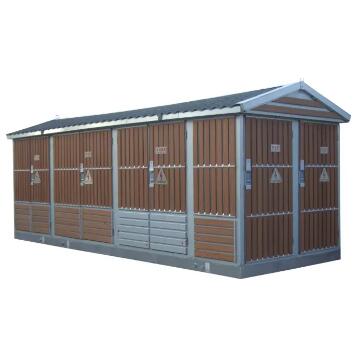Unveiling the Powerhouse: Key Components of a Cabinet Type Substation and Their Functional Significance
2024-01-09
Introduction:
In the dynamic realm of power distribution, Cabinet Type Substations have emerged as compact powerhouses, revolutionizing the way electrical energy is transformed and distributed. Understanding the key components of these substations is pivotal in comprehending their efficiency and functionality. In this blog post, we will explore the integral elements that constitute a Cabinet Type Substation and delve into how each component contributes to its seamless operation.
1. Transformer:
At the heart of every Cabinet Type Substation lies the transformer, a fundamental component that facilitates the conversion of electrical voltage levels. Transformers play a crucial role in ensuring that power can be efficiently transmitted and distributed across different voltage requirements.
2. Switchgear:
Switchgear forms the nerve center of the substation, responsible for controlling the flow of electrical power. It includes switches, circuit breakers, and other protective devices. The switchgear's role is to isolate faulty equipment, enable safe maintenance, and protect the system from overloads or short circuits.
3. Busbars:
Busbars are conductors that act as pathways for the electrical current within the substation. They interconnect various components, such as transformers and switchgear, ensuring a smooth flow of electricity and enabling the distribution of power to different loads.
4. Protection Devices:
Cabinet Type Substations are equipped with an array of protection devices, including relays, fuses, and circuit breakers. These devices are crucial for detecting faults, isolating affected areas, and safeguarding the substation and connected equipment from damage due to abnormal operating conditions.
5. Control Panel:
The control panel serves as the interface through which operators monitor and manage the substation's operation. It houses control devices, indicators, and displays that provide real-time information about voltage, current, and other vital parameters. The control panel enhances the substation's operability and facilitates prompt responses to changes in the electrical system.
6. Enclosure:
The enclosure is the outer structure that houses all the components of the Cabinet Type Substation. It is constructed with materials that provide protection against environmental elements, ensuring the reliability and longevity of the equipment.
7. Cooling System:
As transformers generate heat during operation, a cooling system is essential to maintain optimal temperatures. Cabinet Type Substations often incorporate cooling mechanisms such as fans or other cooling devices to prevent overheating and ensure the efficient performance of the transformer.
8. Monitoring and Communication Systems:
Modern Cabinet Type Substations feature monitoring and communication systems that enable real-time data collection and remote management. These systems enhance operational efficiency, enable predictive maintenance, and contribute to the overall reliability of the substation.
Conclusion:
Each component of a Cabinet Type Substation plays a vital role in shaping its functionality and efficiency. The synergy of transformers, switchgear, protection devices, and other elements creates a compact yet powerful system that transforms and distributes electrical power with precision. As technology advances, these substations continue to evolve, offering innovative solutions for the ever-growing demands of modern power distribution systems.



